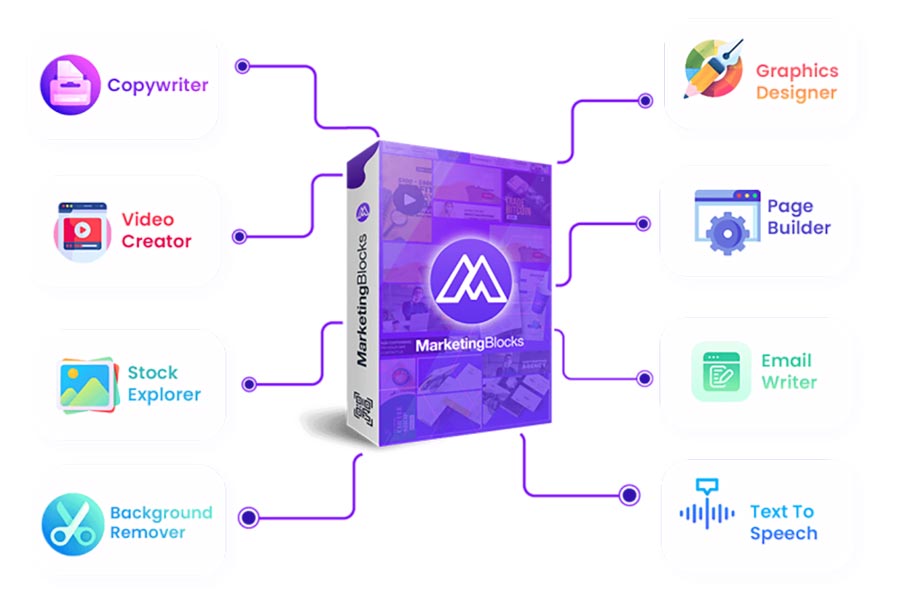Lights, Camera, Action: Video Marketing Trends & Techniques

In today’s digital landscape, incorporating video marketing into a strategy has become crucial for success. Video content is engaging, memorable, and shareable, making it a powerful tool for reaching and connecting with audiences and conveying brand messages. One of the primary advantages of video marketing is its ability to capture and sustain viewers’ attention. As the average attention span of an online user continues to decrease, businesses must devise ways to stand out from the crowd and grab their audience’s attention. Videos offer a platform to narrate a story, exhibit a product, or display a brand’s personality in a way that static images and text cannot.
“By 2022, online videos will make up more than 82% of all consumer internet traffic — 15 times higher than it was in 2017.”
— Cisco
Moreover, video marketing effectively increases website traffic, improves search engine rankings, and boosts sales. With video content, businesses can build a solid emotional connection with their audience, establish credibility, and create brand loyalty.
This blog will explore the latest trends and best practices in video marketing. We will cover the techniques and strategies businesses can use to create engaging and compelling video content. We’ll also provide examples of brands successfully using video marketing to achieve their goals.
Video Marketing Trends
Video marketing constantly evolves, and staying up-to-date with the latest trends is critical for businesses looking to create compelling video content. In this section, we’ll discuss the current trends in video marketing, why they’re essential, and provide examples of brands that successfully use them in their video marketing.
Short-Form Video
Short-form video content is a trend that has been gaining traction recently, with the popularity of platforms such as TikTok, Instagram Reels, and Snapchat. These platforms have shown that audiences are increasingly drawn to bite-sized video content that is easy to consume and share. Short-form videos are typically 60 seconds or less and are often entertaining and highly shareable.
Why it’s important: With the average attention span of online users getting shorter, short-form video is a great way to capture and maintain viewers’ attention. Brands that create short, engaging, shareable videos can tap into the viral nature of social media and reach a wider audience.
“85% of businesses use video as a marketing tool, up from 61% in 2016.”
— Wyzowl
Examples: Chipotle’s #GuacDance challenge on TikTok was hugely successful, generating over 250,000 video submissions and 430 million video starts. The challenge encouraged users to film themselves dancing to a song about guacamole, with the chance to win free chips and guac. Another example is Airbnb’s #NightAt contest, which asked users to create a short video explaining why they should be chosen to spend a night at a famous landmark. The contest generated over 600,000 entries and generated significant buzz on social media.
Live Streaming
Live streaming is another trend that has been on the rise recently, with the popularity of platforms such as Facebook Live, Instagram Live, and Twitch. Live streaming allows brands to connect with their audience in real-time, and it can create a sense of urgency and exclusivity.
Why it’s essential: Live streaming effectively builds trust and authenticity with your audience. It lets you show your brand’s personality, connect with your audience personally, and respond to their comments and questions in real time.

Examples: Red Bull has been using live streaming for many years. They live stream extreme sports events, music festivals, and other events that align with their brand values. The live streams are highly engaging and shareable, and they have helped to establish Red Bull as a lifestyle brand rather than just an energy drink. Another example is Sephora’s Beauty Insider Community features live-streaming beauty tutorials, Q&A sessions with beauty experts, and product launches. The live streams allow Sephora to connect with its audience personally and build a community around its brand.
Personalised Video
Personalised video is still in its infancy but can be a game-changer for video marketing. Personalised videos are customised for each viewer, with content tailored to their interests, preferences, and behaviours.
Why it’s crucial: Personalised video allows brands to create highly targeted content that resonates with their audience personally. It can improve engagement and conversion rates and create a sense of exclusivity and loyalty.
Examples: Bonobos created a personalised video campaign targeting men recently moving to a new city. The videos showed the viewer a customised tour of the city, with tips on where to go, what to do, and what to wear. The campaign was highly successful, with a 100% increase in click-through rates compared to traditional ads. Another example is Cadbury’s personalised video campaign, which allowed users to create a customised video message for their friends and family. The campaign generated over 33,000 personalised videos and significantly increased social media engagement.
Techniques for Effective Video Marketing
Now that we’ve discussed the latest video marketing trends, let’s move on to the techniques for creating effective video content. This section will cover the planning and pre-production techniques for creating compelling videos, tips for writing effective video scripts, best practices for video production and post-production, and strategies for optimising videos for different platforms and audiences.
Planning and Pre-Production Techniques
Creating a compelling video starts with proper planning and pre-production. Here are some techniques to consider:
- Define your target audience and what type of content will resonate with them.
- Determine the key message you want to convey and how it aligns with your brand.
- Develop a creative concept and storyline that will capture your audience’s attention.
- Create a storyboard and shot list to map out the visual elements of the video.
- Choose the appropriate location, props, and equipment for the shoot.
“59% of executives would rather watch a video than read text.”
— Wordstream
Tips for Writing Effective Video Scripts
The script is the foundation of any successful video. Here are some tips for writing effective video scripts:
- Keep it short and to the point. The average viewer’s attention span is short, so focus on the key message and keep it concise.
- Use a conversational tone that aligns with your brand voice.
- Emphasise the advantages of your product or service rather than solely focusing on its features.
- Use humour, storytelling, or emotional triggers to engage your audience.
- Include a clear call to action that prompts viewers to take action.
Best Practices for Video Production and Post-Production
The production and post-production phases are critical for creating high-quality videos that engage your audience. Here are some best practices to consider:
- Use high-quality equipment to capture clear video and audio.
- Consider lighting, framing, and composition to create a visually appealing video.
- Use music and sound effects to enhance the overall viewing experience.
- Add captions or subtitles to make your video accessible to a broader audience.
- Use editing software to refine your video and add special effects, transitions, and other visual elements.

Strategies for Optimising Videos for Different Platforms and Audiences
Optimising your videos for different platforms and audiences is essential for reaching your target audience. Here are some strategies to consider:
- Customise your video length and format for each platform. For example, short-form videos work best on social media, while longer videos are more suitable for your website or YouTube channel.
- Use hashtags and keywords to improve the discoverability of your video on social media platforms.
- Optimise your video’s title, description, and tags for SEO purposes.
- Test and measure the performance of your video on different platforms, and adjust your strategy accordingly.
Following these techniques, you can create videos that capture your audience’s attention, convey your key message, and drive engagement and conversions. Remember to plan carefully, focus on your target audience, and optimise your videos for different platforms and audiences to achieve the best results.
Best Practices for Video Marketing
In addition to the techniques for creating compelling video content, there are also best practices for developing a successful video marketing strategy. In this section, we’ll cover tips for creating a video marketing strategy, advice for measuring the success of video marketing campaigns, recommendations for engaging with viewers and building a loyal audience, and examples of brands that have successfully implemented best practices in their video marketing.
Tips for Creating a Video Marketing Strategy
Creating a video marketing strategy is essential for achieving your marketing goals. Here are some tips to consider:
- Define your marketing objectives and how video fits into your overall marketing plan.
- Determine your target audience and what type of content will resonate with them.
- Develop a content calendar and production schedule to ensure a consistent flow of content.
- Choose the appropriate distribution channels for your video content.
- Allocate resources and budget for video production and promotion.
“Including a video on a landing page can increase conversion rates by up to 80%.”
— Unbounce
Advice for Measuring the Success of Video Marketing Campaigns
It is imperative to gauge the triumph of your video marketing campaigns to assess their efficiency and make well-informed decisions. Here are some key metrics to contemplate:
- View count: the number of views your video receives on various platforms
- The engagement rate refers to the percentage of viewers who engage with your video by liking, sharing, or commenting.
- The conversion rate pertains to the percentage of viewers who take a particular action after watching your video, such as subscribing to your channel or purchasing.
- ROI: the return on investment of your video marketing campaign

Recommendations for Engaging with Viewers and Building a Loyal Audience
Engaging with your viewers and building a loyal audience is essential for building brand awareness and driving conversions. Here are some recommendations to consider:
- Respond to comments and messages quickly to build a personal connection with your audience.
- Motivate your viewers to subscribe to your channel or follow your social media accounts.
- Create a community around your video content by hosting Q&A sessions, live streams, or other interactive events.
- Collaborate with influencers or other brands to expand your reach and gain new followers.
Examples of Brands That Have Successfully Implemented Best Practices in Their Video Marketing
Many brands have successfully implemented best practices in their video marketing campaigns. Here are some examples:
- Nike’s “Dream Crazy” campaign featured athlete Colin Kaepernick and received widespread attention and engagement for its bold message and inspiring content.
- GoPro’s user-generated content strategy has created a loyal community of fans and customers who share their adventurous footage using GoPro cameras.
- Buzzfeed’s Tasty videos have become viral for their quick, easy-to-follow recipes and mouth-watering visuals.
By following these best practices for creating a video marketing strategy, measuring the success of your campaigns, engaging with viewers, and building a loyal audience, you can achieve your marketing goals and drive conversions. Remember to stay consistent, authentic, and focused on your target audience to achieve the best results.
Conclusion
Video marketing is a vital component of any modern marketing strategy. With the rise of digital media, video has become one of the most engaging and effective ways to connect with audiences and drive conversions.
Throughout this article, we’ve explored current trends in video marketing, techniques for creating compelling videos, best practices for developing a successful video marketing strategy, and examples of brands that have successfully implemented these strategies. Here are the key takeaways:
- Staying abreast of the latest trends and best practices is essential to excel in video marketing.
- Planning and pre-production play crucial roles in crafting high-quality videos.
- Planning and pre-production are vital to creating compelling video content that resonates with your audience.
- Writing effective video scripts and using best practices for video and post-production is essential for engaging your viewers and driving conversions.
- To develop a successful video marketing strategy, you must define your marketing objectives, target your audience, and allocate resources and budget.
- Evaluating the effectiveness of your video marketing campaigns is critical for making data-driven decisions and refining your overall marketing strategy.
- Engaging with your viewers and building a loyal audience is essential for building brand awareness and driving conversions.
If you’re looking to improve your video marketing efforts, here are some final thoughts and recommendations:
- Stay informed about the latest trends in video marketing and incorporate them into your strategy when appropriate.
- Develop video content that is engaging, of high quality, and resonates with your target audience.
- Allocate resources and budget to ensure a consistent flow of video content that aligns with your marketing objectives.
- Monitor your metrics and adjust your strategy to optimise your video marketing campaigns.
- Engage with your viewers and build a loyal community around your brand.
Implementing these tips and adhering to best practices can lead to triumph in video marketing and increase conversions for your business.
Be sure to check out our other related posts if you enjoyed this one:
- Supercharge Your Business: Mastering Cross-Channel Marketing Magic!
- Influence: The Psychology of Persuasion by Robert B. Cialdini – A Word Marketing Book Summary
- Building Trust: Brand Awareness & Reputation
- Unlocking Success: Data-Driven Targeted Advertising
- The AI Revolution: Transforming Marketing & Advertising
- Introducing Our New and Improved Dewalist Marketplace Design
- Ad Ethics: Balancing Persuasion with Responsibility
- Email Showdown: Mandrill vs Mailchimp Features
- The Future of Digital Out-of-Home (DOOH) Advertising
- Revolutionising Marketing with Virtual & Augmented Reality
Sign up for updates on this blog and our latest marketing posts if you enjoyed reading this one.
Share our blog content with your friends and colleagues via Facebook, Twitter, Pinterest, LinkedIn, email or WhatsApp links below and help them stay informed about the latest insights on business, marketing, finance, lifestyle, and society. Let’s build a knowledge-sharing community and empower each other to achieve our goals.
Credits
- Featured image by DCStudio on Freepik
- Video marketing trends image by DCStudio on Freepik
- Video marketing techniques image by DCStudio on Freepik
- Video marketing best practices photo by CoWomen on Pexels









